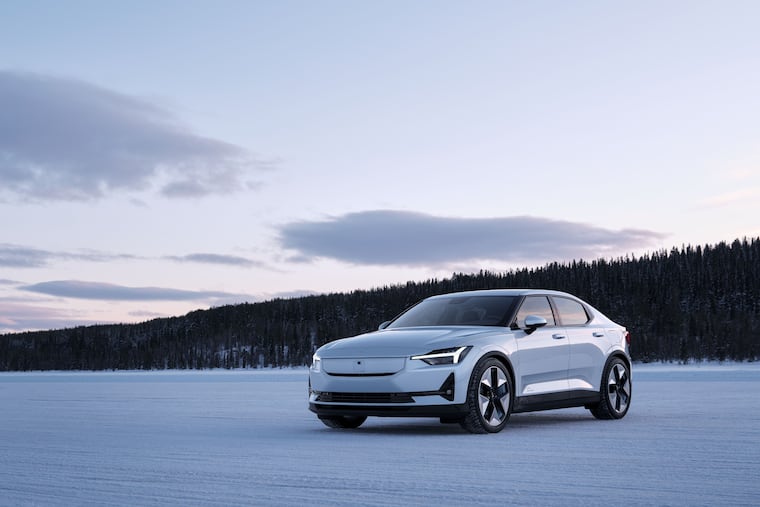2024 Polestar 2: We may have hardly even known you. And that’s OK.
The small EV SUV is a good competitor for the Chevrolet Bolt, but it costs almost two thirds more. Now the company is showing signs of a struggle.

2024 Polestar 2 Single Motor Plus: You’ve never seen anything like this.
Price: $56,750 as tested. Pilot added $2,000; metallic paint, $1,250.
Conventional wisdom: Car and Driver likes the “more approachable pricing, additional configuration options, smooth ride and sure-footed handling,” but not that it’s “notably slower than the dual-motor version” with a “minimal boost in range.”
Consumer Reports was a little harsher, panning its “bone-jarring ride, tight interior, and confusing controls, all of which more than overshadowed the positives of its zippy acceleration and agile handling.”
How it’s built: Consumer Reports predicts the Polestar 2 reliability to be a 5 out of 100. That’s horrific. They probably invented the new 100-point scale just to emphasize Polestar’s unique place at the bottom of the toilet bowl.
A CR spokesperson had this to say via email: “The Polestar 2 and the prediction was created based on the sample of 2022 Polestar 2 from our survey. … We do also know that Polestar is a brand new EV make which tends to be less reliable in their first few years.”
But, go ahead, read on, just for fun.
Marketer’s pitch: (Paraphrasing here) Don’t order one because we can’t make them fast enough. Also, Volvo isn’t sending us any more money.
Basically, the company is losing support from Volvo and has stopped taking custom orders, although they did say that was because of “high demand.” But have you seen a Polestar in your neighborhood? Or your county?
Reality: I hurried this to publication so you can plan to not get one before they’re gone.
What’s new: The Polestar 2 was first unveiled in 2019. A funny thing happened on the way to testing the Polestar 2 — it looks like the company may be going batteries up. Its media site news about its future includes all kinds of lawyer-y statements and qualifications.
Competition: Volkswagen ID.4, Chevrolet Bolt EUV, Kia Niro EV, Hyundai Kona Electric.
Start me up: The Polestar starts automatically via the seat sensor coupled with the brake pedal and gear lever being engaged, much like the Volkswagen ID.4. I’m still not in love with this setup, as I’m never sure I’ll know what’s wrong when something is wrong. And with a 5 out of 100 rating, something’s probably going to go wrong.
Up to speed: The motor with 82 kWh battery creates 299 horsepower. It gets the vehicle to 60 mph in 6.8 seconds, according to Car and Driver, a number that is very slow for an EV. A more high-performance dual-motor version took just 4.1 seconds.
Shiftless: No gears in this electric vehicle, of course. The shifter is a fairly cool loop lever, that you push forward for Reverse and pull for Drive, plus a Park button.
On the road: The Polestar handles quite nicely, with a real small-car feel and pretty nice road manners. It actually bounces a bit on rough surfaces and in hard corners, but it’s all a good feeling.
Driver’s Seat: The driver’s seat is softer than most, with support but a very supple feel. The vegan materials feel nice on the back and the bones, but cheap to the touch. Too cheap for a $55,000 car. You can upgrade to a different vegan material, but, hello, $60.000.
Controls are much like Volvo’s, with the same steering wheel buttons and infotainment screen, although it’s not nearly as clear or user friendly.
Friends and stuff: The backseat is fairly small, and entry exit is a headbanging proposition. Bring your Bon Jovi tapes.
Cargo space is just under 40 cubic feet with the seat folded. (I converted it from the 1,100 liters the press materials confusingly noted.)
Play some tunes: Though the infotainment screen looks like Volvo’s, operation is different, and a little harder to figure out. There are three fairly indecipherable icons across the top giving you some choices in the screen setup, and then there are some other screens available as well, but I couldn’t put a finger on what does what, even after a couple hundred miles.
Sound from the Harman Kardon system is OK, but the surround sound and other effects only make things sound less clear. I’d rate it a B or so.
Keeping warm and cool: This functions a lot like the Volvo system, with temperature and seat heater functions lurking at the bottom of the screen until you touch them, at which point they expand. Into very confusing choices. I just left it in automatic mode.
Range: The Polestar requested that I only charge it to 90% for battery longevity, which left the vehicle with just over 200 miles of range.
It takes about 6 hours to charge in a Level 2 240-volt outlet, about standard.
Where it is/was built: Luqiao, China
In the end: Don’t.
This could have actually been a nice car if it were priced more like a Chevy Bolt or Tesla Model 3. And if it evidently didn’t have the quality control of something from 1970s British Leyland.